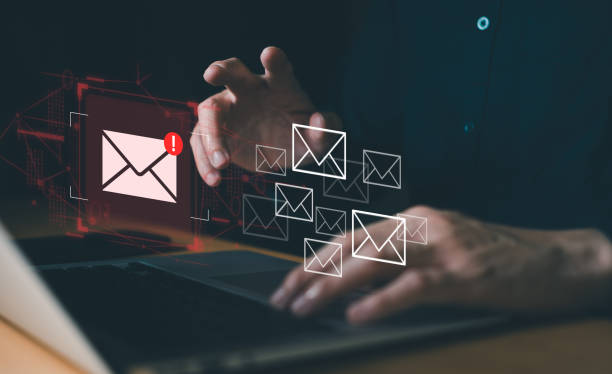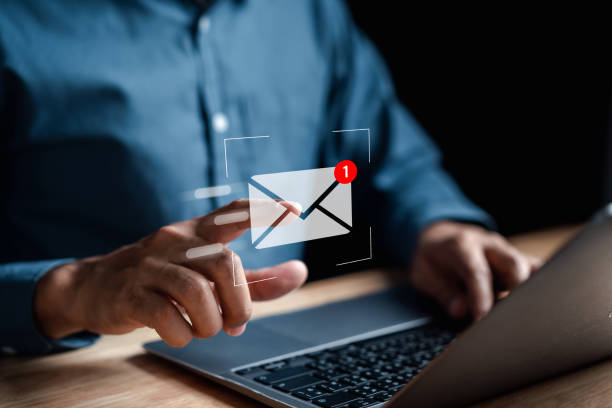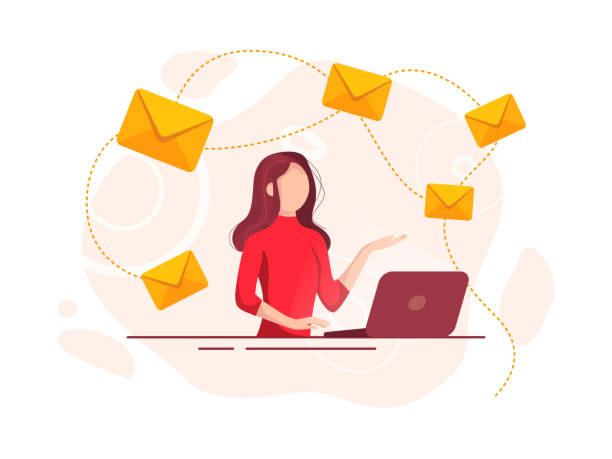
Table of Contents
In today’s fiercely competitive digital marketplace, acquiring new customers is important, but retaining them is even more critical for sustainable growth. Email marketing automation has emerged as one of the most powerful tools to nurture customer relationships, boost loyalty, and increase repeat purchases. As we move through 2025, the landscape of email marketing automation is evolving rapidly with AI, omnichannel integration, and hyper-personalization leading the charge.
In this blog, we’ll explore actionable email marketing automation hacks to help you boost customer retention, supported by recent trends, real examples, and expert insights. Whether you’re a small business or a large enterprise, these strategies will help you stay ahead of the curve and maximize the lifetime value of your customers.
Why Email Marketing Automation is a Game-Changer for Customer Retention

Email marketing automation enables businesses to send timely, relevant, and personalized messages to customers without manual effort. This scalability allows brands to engage customers at every stage of their journey—from welcome emails to re-engagement campaigns—building loyalty and trust.
According to Litmus, email marketing delivers an average ROI of $36 for every $1 spent, making it one of the most cost-effective retention channels. Moreover, automation helps reduce churn by maintaining consistent communication, which is vital since only about 5% of your email list may be ready to buy at any given time.
Recent advances in AI and data analytics have supercharged automation capabilities, allowing marketers to tailor content dynamically based on individual behavior, preferences, and purchase history. This level of personalization drives higher engagement, making customers feel valued and understood.
Top Email Marketing Automation Hacks to Boost Customer Retention in 2025

1. Hyper-Personalization Using AI
Generic emails no longer cut it. AI-powered tools analyze vast amounts of customer data—including past purchases, browsing activity, and email interactions—to craft highly personalized content. This can include dynamic subject lines, product recommendations, and even personalized send times based on when each recipient is most likely to engage.
How to implement:
- Use AI-driven platforms like Pipedrive or Litmus that offer no-code segmentation and predictive send-time optimization.
- Incorporate personalized product suggestions and content blocks that adapt in real-time to user behavior.
2. Lifecycle Email Automation
Automate emails that correspond to different stages of the customer lifecycle: welcome series, cart abandonment, post-purchase follow-ups, and re-engagement sequences. Lifecycle automation nurtures relationships over time, reducing churn and encouraging repeat purchases.
Example: A fashion retailer sends a welcome email series introducing brand values, followed by personalized product recommendations after the first purchase, and a re-engagement email if the customer hasn’t interacted in 30 days.
3. Advanced Segmentation Based on Behavior and Data
Move beyond basic demographic segmentation. Use behavioral data—such as purchase frequency, product preferences, and engagement patterns—to create micro-segments. AI-powered segmentation tools can uncover hidden customer groups that manual analysis might miss.
Benefit: Tailored messaging to specific segments increases relevance and retention rates.
4. Optimize Send Times and Frequency
Sending emails at the right time is crucial to avoid unsubscribes and maximize engagement. AI tools can analyze individual recipient behavior to predict optimal send times. Additionally, monitor email frequency carefully to maintain a balance between staying top-of-mind and avoiding fatigue.
5. Create Interactive and Engaging Email Content
Interactive elements like polls, quizzes, countdown timers, and embedded videos can significantly increase engagement. Newsletters remain a powerful retention tool, helping brands build relationships by sharing valuable content and showcasing personality.
Tip: Use newsletters to provide exclusive tips, behind-the-scenes content, or early access to sales, fostering a deeper connection.
6. Omnichannel Integration for Seamless Experience
Customers expect a consistent experience across all touchpoints. Integrate email marketing with chatbots, mobile push notifications, social media, and voice assistants to create a unified customer journey. Data synchronization across channels ensures personalized and timely communication.
Case study: A government service provider integrated chatbots with email to maintain communication flow while automating support, improving customer satisfaction
Real Examples and Case Studies
- AI-Driven Personalization Boost: An e-commerce brand used AI to personalize email content and send times, resulting in a 25% increase in repeat purchases within six months.
- Lifecycle Automation Success: A subscription box company implemented automated welcome and re-engagement emails, reducing churn by 15% and increasing customer lifetime value.
- Omnichannel Retention: A B2B company integrated email with chatbot support and mobile push, achieving an 89% customer retention rate compared to the industry average of 33.
Best Practices for Implementing Email Marketing Automation for Retention

- Authenticity is Key: Avoid overly robotic or salesy emails. Make your messages sound human and provide genuine value to build trust.
- Respect Privacy: Comply with data protection regulations and be transparent about data usage. This builds customer confidence.
- Analyze and Optimize: Continuously monitor metrics like open rates, click-through rates, and conversion rates. Use A/B testing to refine campaigns.
- Focus on Value: Prioritize content that educates, entertains, or solves problems rather than just promoting products.
How Smart Brands Use Email Automation to Reduce Churn and Increase Loyalty
- Personalized Customer Journeys: Smart brands use automation to send emails tailored to each customer’s behavior and lifecycle stage—welcome emails, post-purchase follow-ups, re-engagement campaigns—making customers feel valued and understood.
- AI-Powered Recommendations: They leverage AI to analyze customer data and send personalized product recommendations or content, increasing repeat purchases and engagement.
- Optimized Timing and Frequency: These brands carefully schedule emails based on when customers are most likely to open them and avoid overwhelming their inboxes, reducing unsubscribe rates.
- Omnichannel Integration: They combine email automation with other channels like chatbots, push notifications, and social media to create seamless, consistent experiences that build stronger relationships.
- Regular List Maintenance: Successful companies keep their email lists clean by removing inactive subscribers and running win-back campaigns to re-engage lapsed customers, improving deliverability and engagement.
5 Mistakes to Avoid in Email Automation for Customer Retention
- Not Segmenting Your Email List
Sending the same generic email to your entire list is a big mistake. Customers have different interests and behaviors, so segmenting your list based on demographics, purchase history, or engagement helps you send relevant messages that keep them interested. - Bombarding Subscribers with Too Many Emails
Sending too many emails too quickly overwhelms your audience and causes email fatigue, leading to unsubscribes or ignoring your messages. It’s important to space out emails thoughtfully and find the right frequency for your audience, usually starting slow and adjusting based on engagement. - Lack of Personalization
Automation without personalization feels robotic and irrelevant. Using AI and dynamic content to tailor emails to individual preferences, such as recommending products based on past purchases or using the recipient’s name, significantly improves engagement and loyalty. - Ignoring Email List Hygiene
Keeping inactive or unengaged subscribers on your list hurts your open rates and deliverability. Regularly “scrubbing” your list by removing or re-engaging inactive users ensures your emails reach people who want to hear from you. - Automating Broken Processes
If your email workflows are poorly designed or ineffective, automating them only amplifies the problem. Before automating, make sure your email sequences are well-planned, clear, and tested for performance.
Frequently Asked Questions (FAQs)
Q1: What is email marketing automation for customer retention?
Email marketing automation uses software to send personalized, timely emails to customers based on their behavior and lifecycle stage, helping maintain engagement and loyalty.
Q2: How does AI improve email personalization?
AI analyzes customer data to tailor content, subject lines, and send times to individual preferences, making emails more relevant and engaging.
Q3: How often should I send automated emails to retain customers?
Frequency depends on your audience, but generally, a balanced cadence that avoids spamming—such as 1-3 emails per week—is effective. Use engagement data to adjust.
Q4: What are the best tools for email marketing automation?
Popular tools include Pipedrive, Litmus, HubSpot, Mailchimp, and ActiveCampaign, many of which offer AI-powered personalization and segmentation.
Q5: How can I measure the success of my retention emails?
Track metrics like repeat purchase rate, customer lifetime value, email open and click rates, and unsubscribe rates to evaluate effectiveness.
Conclusion
Email marketing automation remains a cornerstone of effective customer retention in 2025. By leveraging AI-powered hyper-personalization, lifecycle automation, advanced segmentation, and omnichannel integration, brands can create meaningful, timely interactions that foster loyalty and reduce churn. Incorporate these hacks into your email strategy to unlock sustained growth and deepen customer relationships.
Ready to transform your email marketing automation and boost customer retention? Contact DigiSparkle today for expert guidance and tailored solutions.
